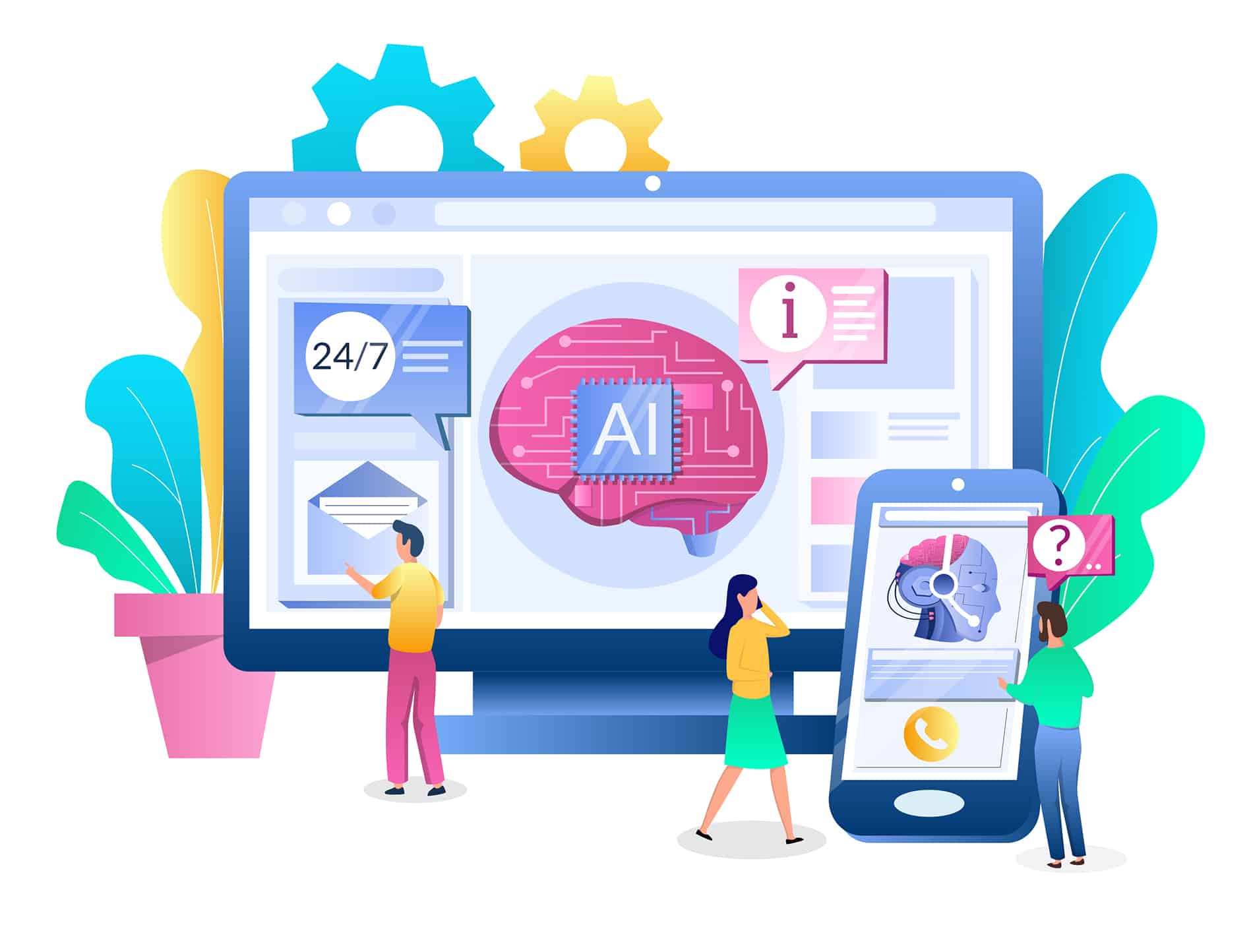As interest in AI skyrockets, organizations are looking for the best ways to incorporate AI into their businesses and better serve customers and end-users. In IT, one way to bring in AI is through the use of chat for self-service. However, many existing chatbots have left a bad taste as they are too simple and can’t assist users with more complex issues. The end result is often frustration and a poor customer experience.
In fact, a recent market study from CIO.com found that nearly 76 percent of chatbot customers report user frustration with existing solutions. That’s a HUGE number. So how can the chat experience be improved? Conversational AI, different from traditional chat, is a great way to improve the chat experience for customers.
When conversational AI is used, the study shows more than 61 percent of respondents could effectively resolve problems vs just 35 percent when traditional chat is used.
Top Challenges for Traditional Chat
When talking about traditional chat, we mean a chatbot experience that has a limited conversation path. It can take inputs and guided dialog paths to return answers in a simplified question/answer format – similar to what you’d get if you searched a knowledge base or FAQ – there aren’t many actions a user can take from the conversation with a traditional chatbot.
According to the survey, few companies are satisfied with their current chatbot and, unsurprisingly, 65 percent say their chatbot isn’t widely used because of the poor experience. As a result, more than 75 percent say they plan to migrate to a different software over the next year or two to try and better the experience.
And with the growing popularity of self-service, this makes sense.
More and more companies are investing in self-service as a strategy to help overburdened IT service desks handle the ever-growing volume of tickets. When you combine automation, self-service and conversational AI – you can have a positive impact on IT resource drain and improve the experience of your customers and end-users.
The top 5 challenges with existing chatbot solutions listed by the survey reflect a desire to reduce IT drain, and the frustrations with traditional chat. Those challenges are:
- Existing chat solutions are time-consuming to manage.
- They don’t take action to solve issues – they just offer possible solutions.
- Traditional chat doesn’t self-learn based on feedback and experiences.
- It can be difficult to train traditional chat as it needs to be built out with limited conversation paths manually.
- Traditional chatbots don’t understand user intent and are inaccurate in their responses in many cases.
So how can traditional chat be improved? The capabilities listed as most critical for a successful chat experience, according to the survey, are self-learning, being easily trainable, the ability to automate the fulfillment of requests and programmatic data ingestion for documents, PDFs, forms and other information sources. Conversational AI addresses all of these requirements.
The Advantages of Conversational AI
So how does conversational AI differ from traditional chat? Aside from the capabilities mentioned previously, conversational AI leverages natural language processing and understands intent. While they do need to be trained, with conversational AI you can facilitate more complex conversations and resolve issues through actions vs. the traditional chatbot’s question/answer limited dialog path.
Because conversational AI chatbots understand intent, they are much more effective when it comes to assisting customers and end-users. For example, when using traditional chat if you say “My password broke” it would likely respond with something like “I’m sorry, I don’t understand that. Please type your issue again,” and continue down that path with a final response that might give you links to 3-5 FAQ articles that it thinks might help resolve the issue – leaving it to the customer to further seek out a solution to the password problem.
When you have conversational AI, if you were to say “My password is broken” it can inform your intent and knows that what you mean is your password isn’t working and needs to be reset. The response from the chatbot is then something like, “I can see you’re having issues with your password. I’ve sent a reset password link to the email on file.”
On the backend, the chatbot can pull the email address needed from the system where it’s stored and automatically send a password reset email – resolving the issue within the conversation in seconds versus sending the customer links and having them do the work to request the link.
According to the survey, the top drivers for adopting conversational AI include:
- Improving the speed of issue resolution.
- Improving customer experience.
- Improving the efficiency of resource use/cost savings.
- Increasing self-service adoption.
- Deflecting tickets from the IT help desk.
As the survey shows, traditional chatbots are quickly becoming an antiquated solution. Especially when it comes to self-service and IT Service Management (ITSM). By adopting conversational AI, organizations can significantly improve self-service adoption, customer satisfaction and problem-resolution time – all while cutting costs and reducing the drain on overburdened IT resources.
To learn more, check out the full survey: Chatbot Frustration and the Promise of Conversational AI

